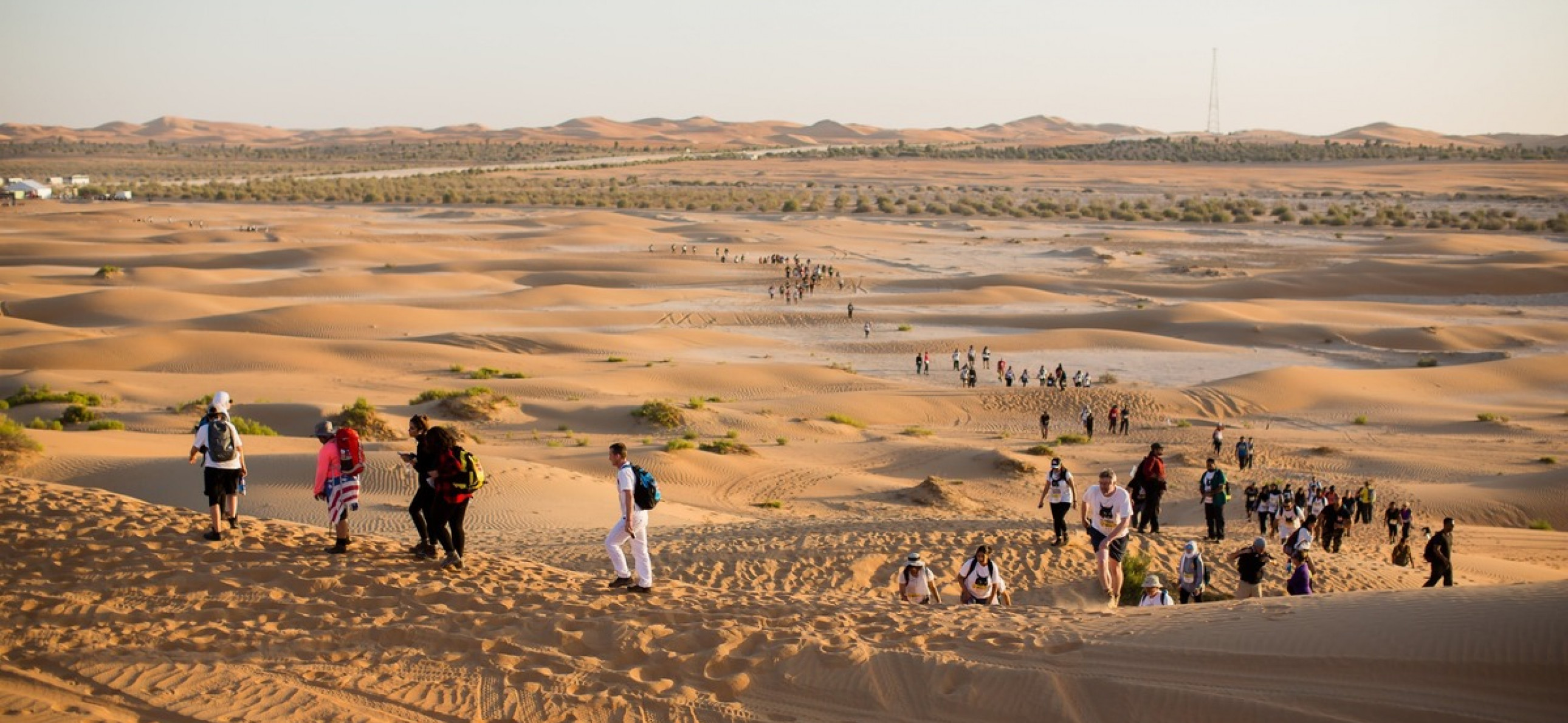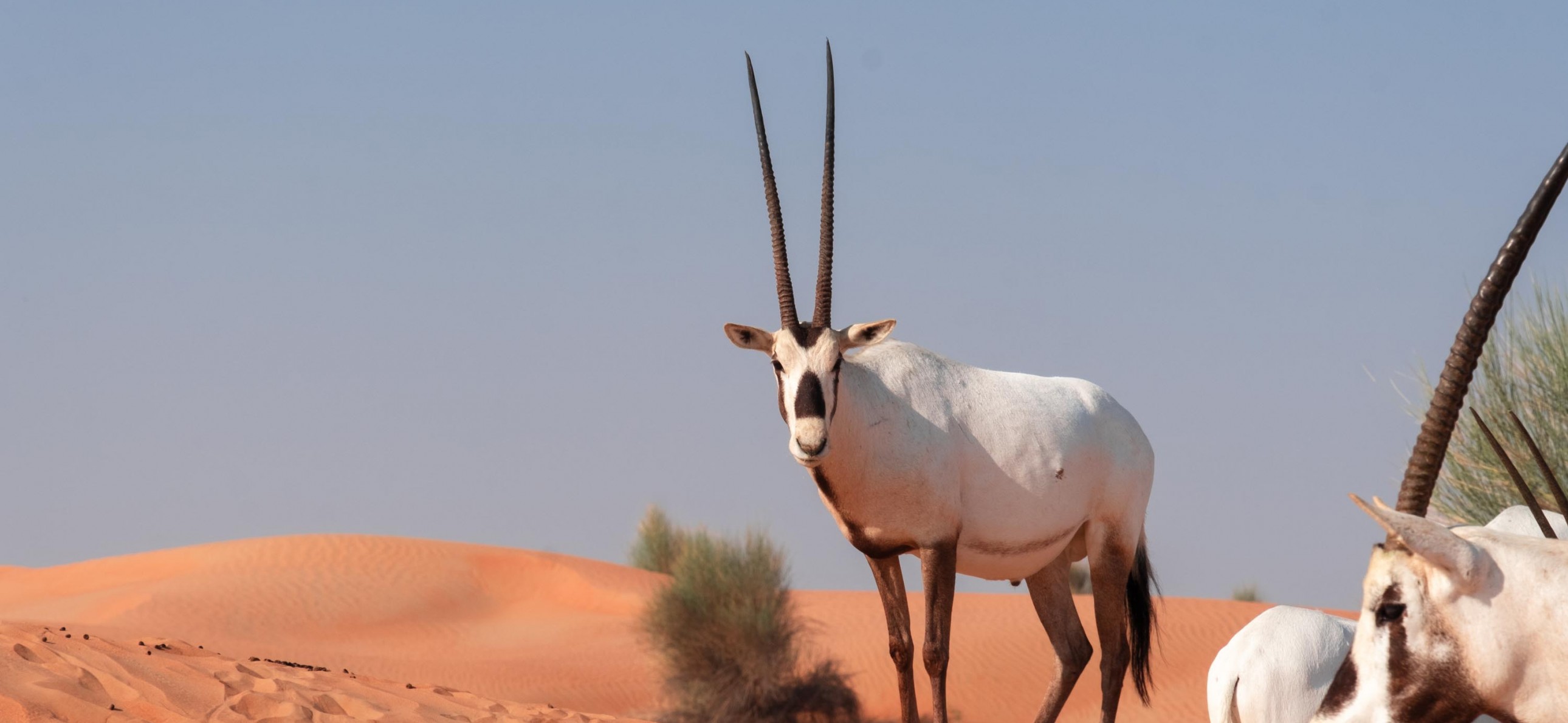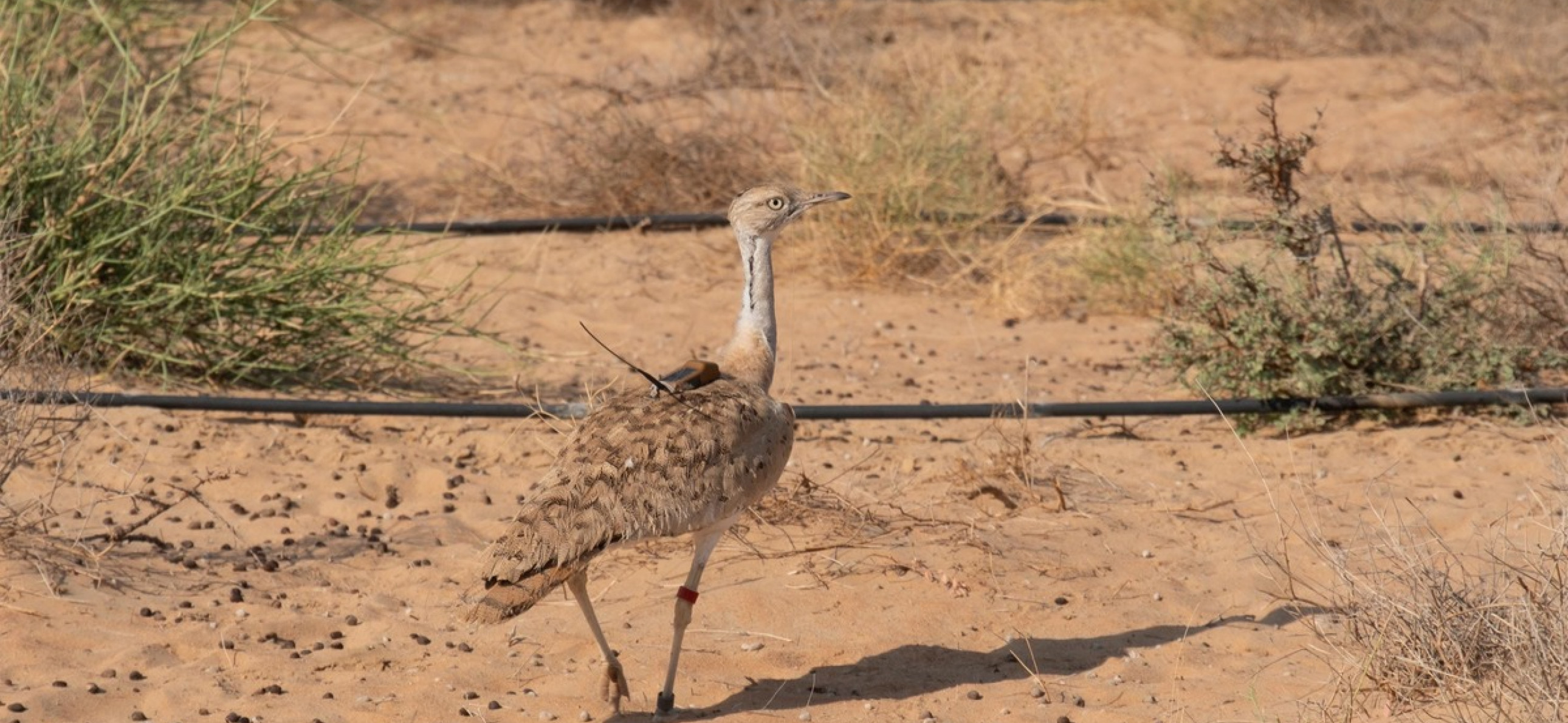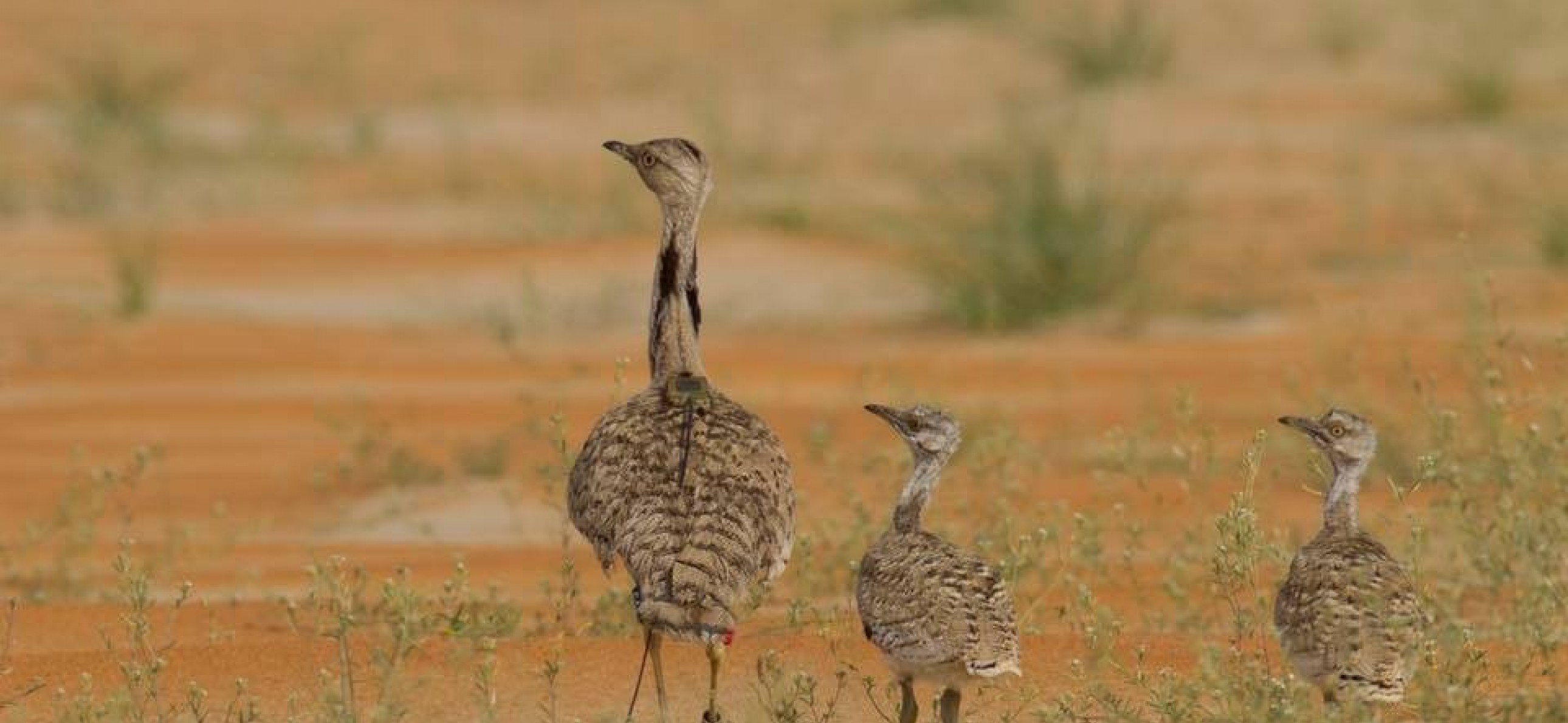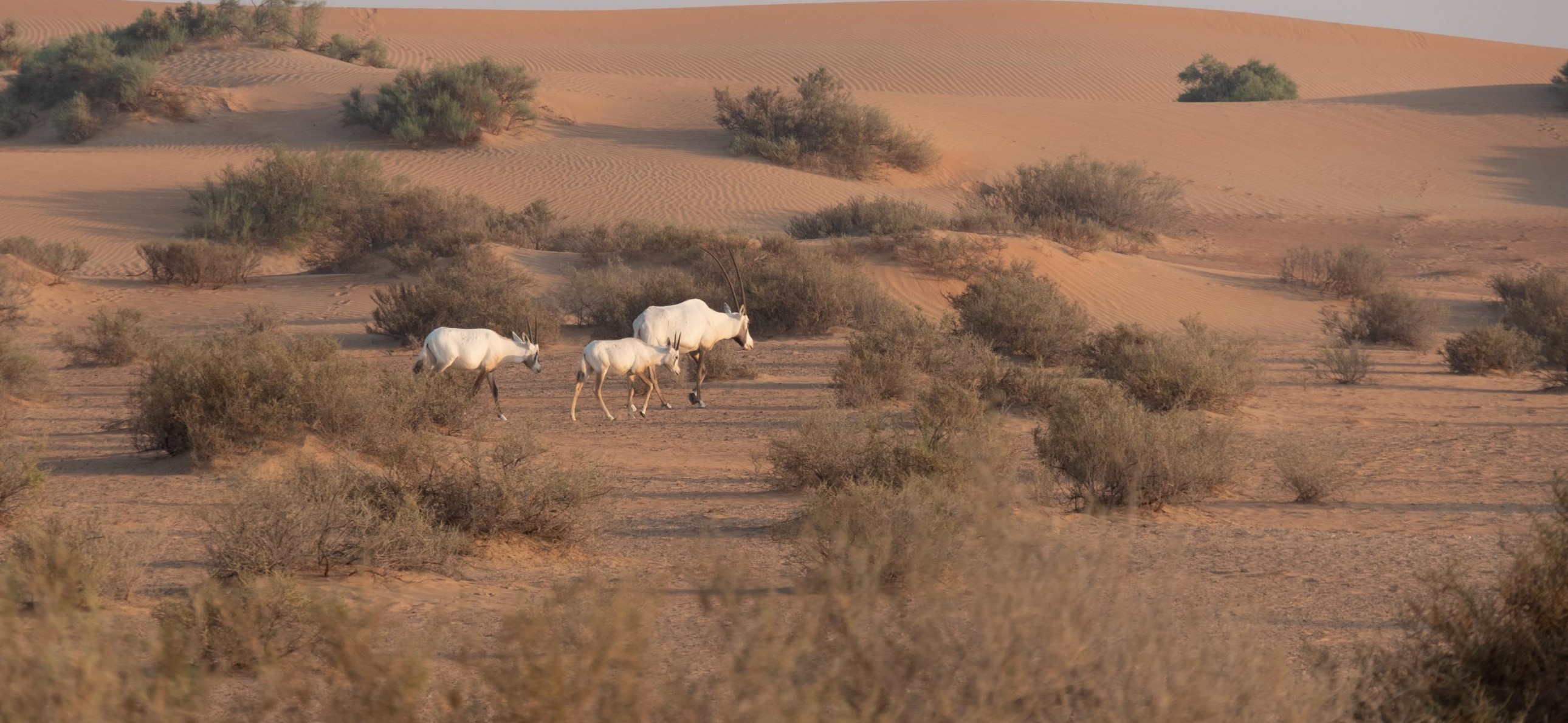Is a desert just empty space?
Here we’ll be focusing on the desert as we mainly know it, the beautiful and mysterious Arabian Desert! The desert is a harsh environment for people, animals and plants because of the extreme heat, and little resources (food and water).
Despite the harsh environment, Emirati ancestors, the Bedouin, (nomadic, desert people, moving from place to place across North Africa to the Middle East in search of grazing areas) were able to survive, making them among the most resilient people on earth.
The UAE’s desert landscape, once traversed by Bedouin, is comprised of plains, sand sheets, sand dunes, sabkhas, burqas and mesas. Burqas and mesas are the local names given to rocky outcrops and small jebels (mountains) found in the western region, which have long been protected following a verbal request by the late Sheikh Zayed. They have unique topographic features and provide key ecological functions as nesting and denning habitat for birds and bats and hold significant cultural value.
The land of lost borders… What you should know about the desert -
- Deserts constitute over 1/5th of Earth’s land mass, and around 80% of the UAE’s land area.
- Most deserts get less than 25 centimetres of precipitation each year (which is not very much rain at all!). As a result, there is little to no vegetation cover in deserts.
- Only 10% of deserts around the world are comprised of sand dunes; the rest are mountainous, rock, sand flats or salt flats.
- Sand dunes are sculpted primarily by wind - they can rise up to 180 meters or 590 feet! (National Geographic). One of the UAE’s most notable sand dunes is Tal Moreeb in Liwa – 300 metres high! A must-see attraction!
- There is nothing deserted about deserts! Deserts often have an unbelievably diverse ecosystem and are home to a large number of species of plants, animals and other organisms that have evolved to survive the harsh conditions, scarce water and arid landscapes.
What can you find in the UAE’s deserts? Deserts may lack water, but they don’t lack life.
- Desert plants and animals have evolved to minimize water loss, and are very effective at absorbing, storing and managing the little water they do get, enabling them to survive long periods of drought. For example, the Ghaf tree has roots up to 30 metres long to access water deep underground.
- Several animals have adapted to stay cool by becoming nocturnal and living underground.
- Animal diversity is high, especially among reptile species, which are particularly well adapted to hot and dry conditions.
The UAE deserts are also home to a range of interesting species:
- Trees such as the Ghaf, Samur and Arabian Gum Tree
- Trees are used for roosting and breeding by species such as the Desert Eagle Owl.
- Desert shrubs such as the native Haloxylon salicornicum (locally known as Rimth), and small trees such as the Haloxylon persicum (locally known as Ghada).
- Breeding birds such as the Greater Hoopoe-Lark, Black-crowned Finch-Lark Crested Lark and Southern Grey Shrike, Cream-colored cursor.
- A wide variety of animals, including the Sand Cat, Houbara, Barbary Falcon, Rupell's Fox, Sand Gazelle, Arabian Oryx, Arabian Sand Gecko, Egyptian Spiny-tailed Lizard (Dhub), Desert Monitor, Arabian Horned Viper and the Yellow-Spotted Agama.
Why are deserts important?
The desert ecosystem is a habitat for several wild animals. Now, what does the desert mean to the people, history and culture of the UAE? The desert has helped shape the culture and traditions of the Emirati people.
In the words of the UAE President, His Highness Shaikh Khalifa Bin Zayed Al Nahyan, “The desert occupies the largest part of our country and is the factor with the deepest and far-reaching impact on our cultural history and social activity and tremendous influence in our economy. The desert is the source of water and natural wealth and an incubator of pasture and medical plants. It is the source of our home, life, identity and our future. It is land thriving with life.”
There are many ways to enjoy the desert: moonlight dune walks, storytelling around the campfire, camping, spotting species, and stargazing
“I do love the desert. Whenever I feel a little tired, I go there to restore my strength,” The late Sheikh Zayed bin Sultan Al Nahyan, the founding father of the United Arab Emirates
Desert plants play a variety of important roles, including:
- Contributing to sand dune stabilization, by fixing the dunes with their roots
- Providing traditional medicine for humans, as well as food and shelter for animals
- At the basis of the food chain, plants help with water retention, and so a source of water and nutrients for many animal species.
Deserts in the UAE: a famous cultural landmark.
Some of the deserts in the UAE include:
- The Arabian Desert, also known as the Empty Quarter (Rub Al Khali in Arabic), lies in the south-western portion of the UAE, within the emirate of Abu Dhabi
- Al Khatim Desert, located between Abu Dhabi and Al Ain
- The Gulf of Oman Desert, spanning Fujairah and the north-eastern coast
- Hajar Mountains
UAE authorities have designated several desert areas as protected areas:
Dubai:
- Al Marmoom Reserve, Dubai Desert Conservation Reserve
Fujairah
- Wadi Wurayah
Sharjah:
- Mleiha
- Al Hafeya
- Wadi al Helo
Threats to desert biodiversity
Desert soils take a long time to recover from environmental disturbances, due to the desert’s dry conditions. This makes desert landscapes exceptionally vulnerable to human activities, such as:
- Climate change
- Decreased rainfall and increased drought dry up water holes
- Unsustainable groundwater extraction
- Water is a precious resource in deserts, and many store water deep underground (aquifer). Most of this water is being extracted for farming. These stores are vulnerable to over-extraction.
- Habitat loss and destruction
- Construction of housing, commercial establishments and other infrastructure, in addition to overgrazing by livestock
- Leisure activities
- Off-road driving, dune-bashing and camping can all lead to habitat degradation and disturbances, due to alteration of the landscape, noise pollution and litter. The waste left behind is causing problems for desert wildlife, as litter can end up in the stomachs of camels or gazelles, which can be deadly. Unfortunately, there are many cases where the animals are unable to digest their food due to the amount of plastic found in their digestive system. Community contribution in environment protection and biodiversity conservation is crucial here.
The desert continues to play an important role in the UAE and we each need to do our part to take care of it. There are many ways you can make a difference.





